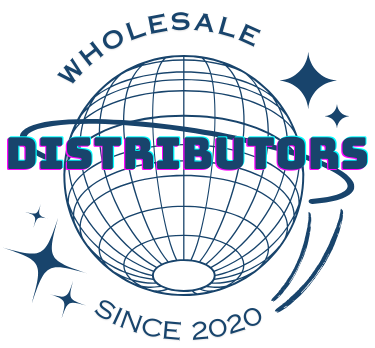
Buying products wholesale for your Amazon business can be an incredibly profitable venture—if done correctly. However, many new (and even experienced) sellers often make avoidable mistakes when sourcing from Amazon wholesale suppliers. These mistakes can lead to profit loss, account suspensions, or wasted time and resources.
In this article, we’ll highlight the most common mistakes to avoid when buying Amazon wholesale products, and provide practical tips to ensure you make smart, informed decisions that will help your business thrive.
1. Not Vetting Wholesale Suppliers Properly
One of the most common mistakes is failing to verify the legitimacy of your wholesale supplier. Partnering with a scammy or unreliable source can lead to:
- Low-quality or counterfeit products
- Delayed shipments
- Overpriced inventory
- No invoices for Amazon approval
What to Do Instead:
- Always research the supplier’s background.
- Look for trusted wholesale suppliers in the USA with positive reviews.
- Ask for references or testimonials.
- Request samples before placing a large order.
2. Ignoring Amazon’s Product Restrictions
Amazon has strict rules on what can and cannot be sold. Failing to check product eligibility is a costly mistake that could lead to:
- Product listings being removed
- Account suspensions
- Inventory being stuck at Amazon FBA
What to Do Instead:
- Use Amazon’s Category and Product Restrictions guide.
- Check if your account is eligible to sell a product before purchasing.
- Choose unrestricted and low-risk categories like grocery, household, and beauty from reliable distributors in the USA.
3. Not Doing Proper Market Research
Buying bulk inventory without understanding demand and competition is risky. Many sellers assume a product will sell well just because it looks popular.
What to Do Instead:
- Use tools like Helium 10, Jungle Scout, and Keepa to analyze:
- Product sales volume
- Competition level
- Pricing trends
- Focus on high-demand and low-competition items.
4. Overlooking Profit Margins
Not calculating your true profit margin can cause you to buy products that won’t earn you much—if any—money. Consider all expenses:
- Cost of goods
- Shipping fees
- FBA fees
- Advertising and promotions
What to Do Instead:
- Use Amazon’s FBA Revenue Calculator.
- Aim for at least a 30% profit margin after all costs.
- Work with the best wholesale suppliers who offer competitive pricing.
5. Failing to Order Samples
Skipping the sampling process is a big mistake that often leads to quality issues, returns, and negative reviews.
What to Do Instead:
- Always order samples from new suppliers.
- Test product durability, packaging, and branding.
- Ensure it matches the listing description you plan to use on Amazon.
6. Not Understanding Invoicing Requirements
Amazon requires invoices to prove authenticity and sourcing legitimacy—especially if your account is flagged.
What to Do Instead:
- Work with top wholesale suppliers in the USA who provide proper invoices.
- Make sure the invoice includes:
- Your business name
- Supplier details
- Product breakdown
- Purchase date
7. Ordering Too Much Inventory Too Soon
While bulk buying leads to lower unit costs, ordering too much before validating the product can lock your capital and create storage issues.
What to Do Instead:
- Start with a small test order.
- Validate product performance.
- Scale gradually based on demand.
8. Ignoring Brand Authorization
Reselling branded products without proper authorization can result in intellectual property complaints and account suspension.
What to Do Instead:
- Only source from authorized distributors in the USA.
- Request brand authorization letters if necessary.
- Stick to ungated categories or private label if you’re unsure.
9. Not Building Long-Term Supplier Relationships
Treating your suppliers as one-time vendors can result in missed opportunities for better pricing, exclusive products, and priority fulfillment.
What to Do Instead:
- Communicate regularly with your supplier.
- Be honest about your sales expectations.
- Negotiate deals based on volume and loyalty.
10. Relying on One Supplier Only
Putting all your eggs in one basket can be risky. If your supplier faces delays or stock issues, your entire business could suffer.
What to Do Instead:
- Diversify your supply chain.
- Work with multiple wholesalers in the USA.
- Always have a backup for your best-selling products.
Conclusion
Avoiding these common mistakes when buying Amazon wholesale products can save you from costly errors and set you on the path to sustainable growth. Take time to research, plan, and build relationships with trusted wholesale suppliers in the USA.
Whether you’re sourcing from grocery distributors, health & household wholesalers, or other product categories, making informed decisions ensures better margins and long-term success.
By steering clear of these errors and following best practices, you’ll be equipped to build a profitable and scalable Amazon wholesale business.

Add a Comment